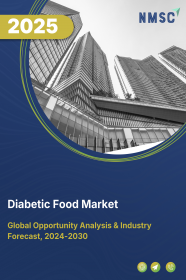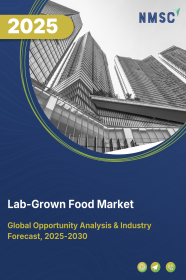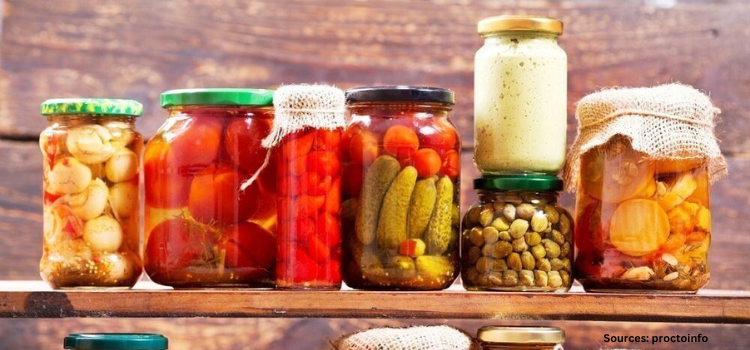
Diabetic Food Market by Disease Type (Type 1 and Type 2), by Product Type (Confectionery, Bakery Products, Dairy Products, Dietary Beverages, Ice Creams and Jellies, and Others), by Age Group (Children and Adults), and by Distribution Channel (Supermarkets & Hypermarkets, Pharmacies & Drug Stores, Online Stores and Others) - Global Opportunity Analysis and Industry Forecast 2022-2030
US Tariff Impact on Diabetic Food Market
Trump Tariffs Are Reshaping Global Business
Market Definition
The global Diabetic Food Market size was valued at USD 11.25 billion in 2021 and is predicted to reach USD 19.38 billion by 2030 with a CAGR of 6.2% from 2022-2030. Diabetic foods are dietary products with low carbohydrate and sugar content in order to control glucose levels in diabetic patients.
Diabetic products are aimed to minimize the symptoms of diabetes and the potential complications of a long-term elevation in blood sugar. Edible diabetic products are made with whole grains, brown rice, millet baked sweet potato, quinoa and oatmeal and can be consumed by the non-diabetic population to avoid occurrence of diabetes in the future.
Market Dynamics and Trends
An increase in the prevalence of diabetes along with the various other chronic diseases such as cardiovascular and obesity, is one of the major factors driving the growth of the diabetic food market. According to IDF Diabetes Atlas, there were 537 million people aged 20-79 years with diabetes in 2021 and this figure is predicted to reach 643 million and 783 million by 2030 & 2045 respectively.
Also, high consumption of junk food leading to health issues from food including saturated and trans-fats have pushed individuals to utilize diabetic food products more often. As per the American Diabetes Association, saturated fat raises cholesterol levels increasing risk for heart diseases, heart attack and stroke. More advertisements & awareness campaigns by the manufacturing companies raise health consciousness among the population.
Moreover, the introduction of new advanced products that include low-fat dairy products, sugar-free beverages & snacks, and low-calorie edibles boost the diabetic food market growth. For instance, Kate Farms introduced glucose support 1.2 plant-based, organic Nutrition Shake in February 2022 for U.S. diabetic patients. However, the relatively high product prices hinder market growth to some extent.
Also, low awareness regarding health benefits of these products, especially in developing nations restrains the uptake of diabetic food items. On the contrary, technological advancement, such as genetic and functional diabetic food coupled with rapid digitalization & thriving e-commerce industry, is to offer a wide range of products, creating ample growth opportunities for the diabetic food market in the coming years.
Market Segmentations and Scope of the Study
The diabetic food market share is segmented on the basis of disease type, product type, age group, distribution channel and geography. On the basis of disease type, the market is bifurcated into Type 1 and Type 2. Based on product type, the market is classified into confectionery, bakery products, dairy products, dietary beverages, ice creams and jellies, and others. By age group, the market is categorized into children and adults
By distribution channel, the market is categorized into supermarkets & hypermarkets, pharmacies & drug stores, online stores, and others. The geography breakdown and analysis of each of the aforesaid segments include regions such as North America, Europe, Asia-Pacific, and RoW.
Geographical Analysis
North-America dominates the diabetic food market in terms of revenue and is expected to continue its dominance during the forecast period. This is owing to the rise in the aging population along with health complexities, such as cholesterol and high blood pressure level in individuals. According to the Federal Interagency Forum on Child and Family Statistics, in 2020, there were about 16.9% of the Americans aged 65 years old or over, which is projected to reach 22% by 2050.
Large number of obesity cases in the U.S. due to the high consumption of junk food is another factor contributing to regional revenue generation. According to Trust for America’s Health, 16 states in the U.S. have adult obesity rates at or above 35% including Delaware, Iowa, Ohio, and Texas in 2020.
While in the Asia-Pacific diabetic food market is penetrating highly due to an increase in the number of diabetic populations along with chronic kidney disease and obesity in nations such as China and India. As per IDF, in 2021 90 million adults aged 20 to 79 suffered from diabetes in South-East Asia. Furthermore, a rise in awareness of diabetic food products such as dairy products and confectioneries surges the regional growth.
Competitive Landscape
Different players operating in the diabetic food market include Kate Farms, Glucose Health, Inc., Nestlé, Unilever, Mars Inc., Tyson Food, The Hershey Company, The Kellogg Company, Fifty 50 Foods, Inc. and The Coca-Cola Company. These players are continuously launching innovative products to maintain their dominance.
For instance, in December 2021, GLUCODOWN "enhanced water" drink mixes was launched by Glucose Health at Amazon in North America. Similarly, in June 2020, Splenda-sweetener brand had launched Splenda Diabetes Care Shakes. It is the very first no added sugar shakes that manage blood sugar and support to manage diabetes & prediabetes.
Key Benefits
-
The diabetic food market report provides a quantitative analysis of the current market estimations throughout 2022 to 2030. This analysis assists in identifying the prevailing market opportunities to capitalize on.
-
The study comprises of an extensive analysis of the diabetic food market trends including the current and future trends for depicting the prevalent investment pockets in the industry.
-
The information related to key drivers, restraints, and opportunities, and their impact on the diabetic food market is provided in the report.
-
The competitive analysis of the market players along with their market share in the diabetic food industry, is mentioned.
-
The SWOT analysis and Porter’s Five Forces model are elaborated on in the study.
-
The value chain analysis in the market study provides a clear picture of the stakeholders’ roles.
Diabetic Food Market Key Segments
By Disease Type
-
Type 1
-
Type 2
By Product Type
-
Confectionery
-
Bakery Products
-
Dairy Products
-
Dietary Beverages
-
Ice Creams and Jellies
-
Others
By Distribution Channel
-
Supermarkets & Hypermarkets
-
Pharmacies & Drug Stores
-
Online Stores
-
Others
By Age Group
-
Children
-
Adults
By Geography
-
North America
-
U.S.
-
Canada
-
Mexico
-
-
Europe
-
UK
-
Germany
-
France
-
Italy
-
Spain
-
Rest of Europe
-
-
Asia-Pacific
-
China
-
India
-
Japan
-
South Korea
-
Australia
-
Rest of Asia-Pacific
-
-
RoW
-
UAE
-
Saudi Arabia
-
South Africa
-
Brazil
-
Remaining Countries
-
REPORT SCOPE AND SEGMENTATION:
|
Parameters |
Details |
|
Market Size in 2021 |
USD 11.25 Billion |
|
Revenue Forecast in 2030 |
USD 19.38 Billion |
|
Revenue Growth Rate |
CAGR of 6.2% from 2022 to 2030 |
|
Analysis Period |
2021–2030 |
|
Base Year Considered |
2021 |
|
Forecast Period |
2022–2030 |
|
Market Size Estimation |
Billion (USD) |
|
Growth Factors |
Increase in prevalence of diabetes along with the various other chronic diseases such as cardiovascular and obesity
High consumption of junk food leading to health issues from food have pushed individuals to utilize diabetic food products more often. |
|
Countries Covered |
20 |
|
Companies Profiled |
10 |
|
Market Share |
Available for 10 companies |
|
Customization Scope |
Free customization (equivalent up to 80 working hours of analysts) after purchase. Addition or alteration to country, regional, and segment scope. |
|
Pricing and Purchase Options |
Avail customized purchase options to meet your exact research needs. |
KEY PLAYERS
-
Kate Farms
-
Glucose Health Inc.
-
Nestle
-
Unilever
-
Mars Inc.
-
Tyson Food
-
The Hershey Company
-
The Kellogg Company
-
Fifty 50 Foods, Inc.
-
The Coca-Cola Company

















 Speak to Our Analyst
Speak to Our Analyst





















